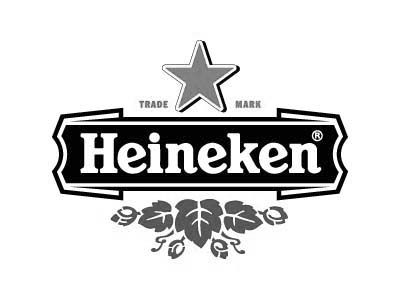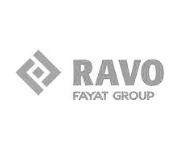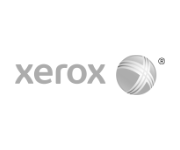What does feedforward mean?
More and more organizations are working with feedforward. But what does feedforward mean? And is feedforward only positive, meaning that we can no longer give negative feedback? And how can I optimize the use of feedforward within my team or organization? In this article, we provide answers to these frequently asked questions.
What does feedforward mean?
Feedforward is often confused with positive feedback, which emphasizes giving compliments only. Feedforward means more. It is about appreciating what someone is already doing well and utilizing their strengths for future actions and behaviors. There is no focus on what went wrong in the past. The idea behind feedforward is that people are better able to concentrate on what they are good at (their strengths) in order to become even better in the future, rather than receiving negative feedback about what they are not good at. Feedforward means that the emphasis is not on what is not going well because our human brain finds it difficult to learn from criticism and actually improve based on it. With feedforward, you express appreciation, so that positive energy is created, and a learning attitude is developed to further develop and improve.
Feedforward means more. It is about appreciating what someone is already doing well and utilizing their strengths for future actions and behaviors. There is no focus on what went wrong in the past. The idea behind feedforward is that people are better able to concentrate on what they are good at (their strengths) in order to become even better in the future, rather than receiving negative feedback about what they are not good at. Feedforward means that the emphasis is not on what is not going well because our human brain finds it difficult to learn from criticism and actually improve based on it. With feedforward, you express appreciation, so that positive energy is created, and a learning attitude is developed to further develop and improve.
Does feedforward mean that we can only be nice to each other?
It is not the case that you can never ask people for challenging results or give them difficult feedback. We also need criticism to continue to develop. Ultimately, feedforward must be action-oriented to promote improvement and growth and it must be linked to the common result that you want to achieve together. It is important how you give this feedback. Do it in a way that is seen by the recipient as inclusive and supportive. Feedforward means that qualities (along with corresponding behavior) are recognized and utilized to be able to take on future work even better. For the development areas and improvement suggestions, we focus on the qualities that are used less frequently but are already recognized by the recipient. We do not focus on the qualities that are not or hardly recognized. With feedforward, you utilize what already exists!
On this page, we provide practical examples of feedforward.
The difference between feedback and feedforward for our brains
As indicated, feedforward does not mean that you can no longer criticize or address someone’s behavior. By providing (or requesting) feedforward instead of feedback, you use a positive and improvement-focused approach. This limits cortisol production and stimulates oxytocin. As a result, people are not guided by fears and threats, but are inspired by opportunities and possibilities to do even better. The goal of feedback is always for the other person to improve. However, due to the functioning of the brain, this is less likely to occur when the feedback is critical. This is because the other person feels threatened, becomes defensive, and does not learn optimally from the feedback. With feedforward, the person is more open to improvement.
Feedforward is therefore more effective in truly helping people improve and develop. And that is the goal of feedback. It has been scientifically proven that this feedback closes our brains. When someone receives negative feedback, it can lead to emotions such as fear, stress, and defensiveness. It can also give a reduced sense of self-worth and self-confidence. This can make it more difficult for our brains to remember and process information. A recognizable example is perhaps receiving bad news from a doctor. During such a conversation, our brains are highly focused on the possibly bad news and become narrow. They no longer absorb much of what is said. Many people therefore bring a family member or friend to such a conversation. George Kohlrieser, clinical psychologist and professor at the IMD Business School, puts it as follows: “The central idea is that people need a secure base to switch off the defensive nature of our brain. So that we are not led by fears and threats, but are inspired by opportunities and possibilities.”
Examples where feedforward can be used:
- Personal development:
Since December 1999, we have been supporting managers and employees in their personal development. When developing the feedforward method, personal development and growth were our first goals. Feedforward should contribute to real learning and development of managers and employees. Feedforward can be used to help someone develop skills and behaviors, both in professional and personal situations. It can, for example, be used in coaching, training, and performance evaluations/development conversations. - Team development:
We also support many (management) teams with customized programs. No team is the same. We always seamlessly align our programs with the context of your team and organization. What our programs, workshops, and lectures have in common with all our clients is that they are always exciting, exploratory, positive, and focused on maximum results. We support teams during leadership programs, team coaching, improving collaboration, etc. - Organizational development:
Organizational development based on feedforward is increasingly being chosen by profit, non-profit, and government organizations. Whether it concerns leadership development, switching from performance reviews to development conversations, or building an open feedback culture and improving continuous dialogue.
“As Manager Learning and Development, my wish was to use feedforward for a talent program where I wanted to emphasize the talents of colleagues. Testing out feedforward first to understand what it is and how it is applied is a requirement. I quickly came to the conclusion that it is an effective and useful tool. I therefore did not hesitate to offer it as part of the leadership program for young talent.”
Sylvia The-McArthur – Group HR Director Loyens & Loeff (former Manager L&D at Wageningen University & Research)
We are happy to brainstorm with you, design interventions, and help you achieve the desired result. For more information or to make an appointment, please contact Marco Schreurs or Muriel Schrikkema.







